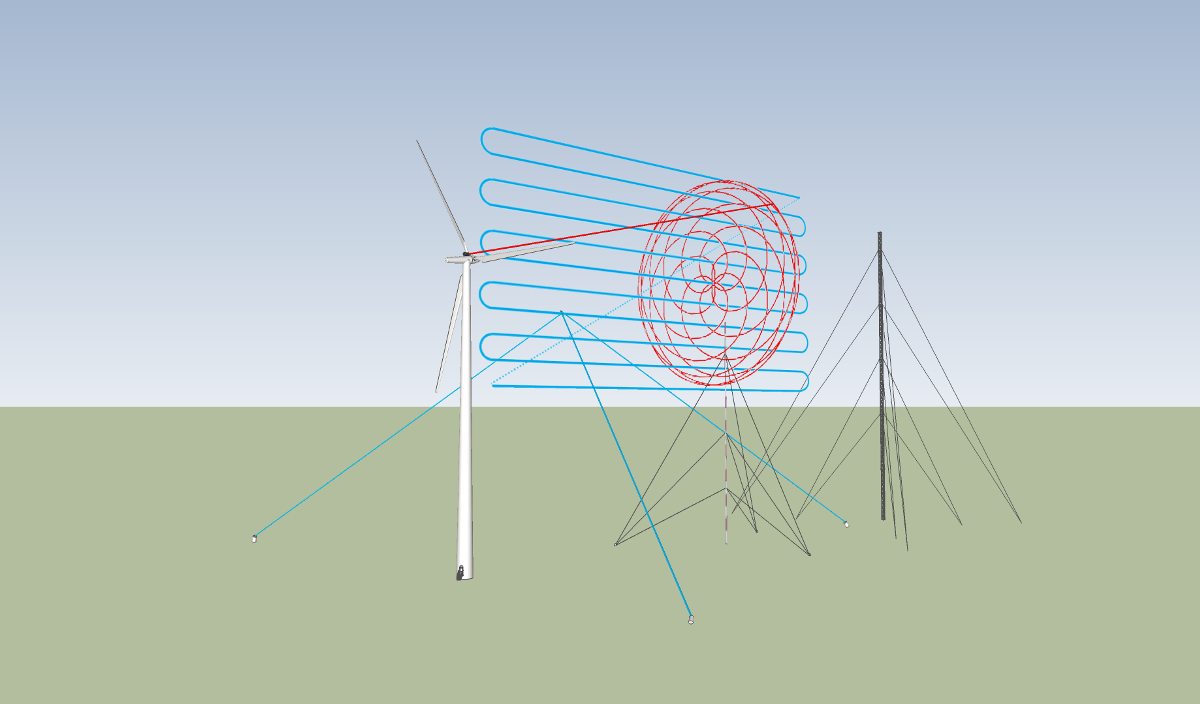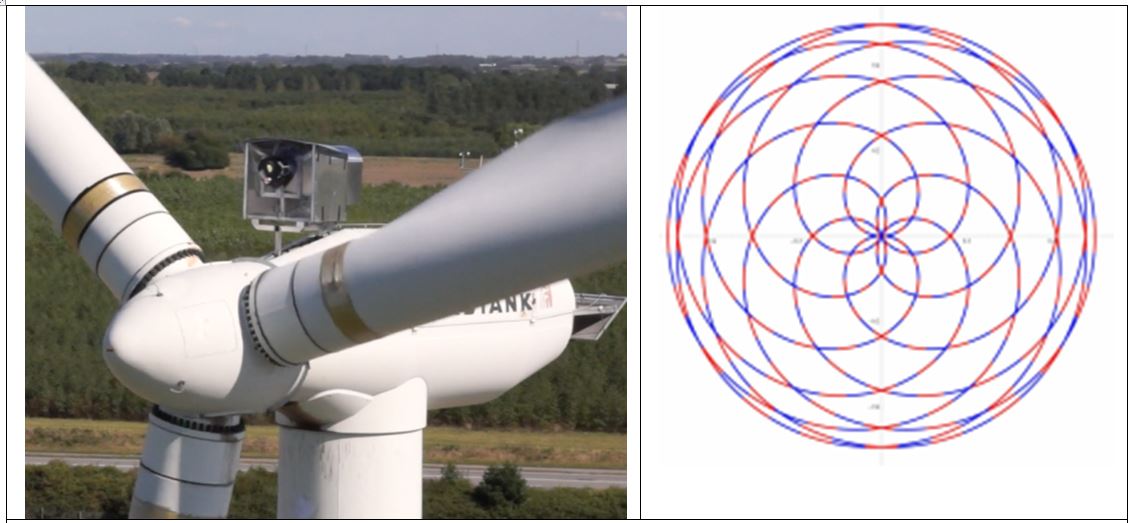Measurement of turbine inflow with a 3D WindScanner system and a nacelle mounted SpinnerLidar:
The first measurement campaign of UniTTe has taken place between August and October 2014, at the DTU Risø Campus test site. Detailed measurement of the inflow, in front of the 500 kW Nordtank wind turbine (rotor diameter D=41.1m), have been taken simultaneously with the short-range WindScanner system and the SpinnerLidar.
1. Measurement set up
Three time and space synchronized short-range WindScanners were deployed around the turbine to measure the wind velocity vectors in 3 dimensions, along scan trajectories laid out in 3 different planes of 1D by 1.5D, with a spatial resolution of 4m:
- One horizontal plane, 1.5D long and 1D large;
- One vertical plane orthogonal to the rotor plane, starting at the rotor plane, 1.5D long and 1D high;
- One vertical plane, parallel to the rotor plane, at 46m upstream, 1D high by 1D large.

Fig. 1 Measurement set up with the three WindScanner systems around the turbine and the upstream masts
The SpinnerLidar, originally designed for spinner-integration, was installed on the top of the turbine nacelle, behind the rotor, and set to scan at 46 m upstream. With its two rotating scan prisms, the SpinnerLidar is able to scan the entire swept rotor area in a few seconds (see scanning pattern to the right in Figure 2) and thus provided measurements with a very high spatial and temporal resolution.

Fig. 2 Left: Picture of the SpinnerLidar on the turbine nacelle; Right: Scan pattern
1.3 The free flow
A 54m met mast (turbine higher tip height) provides measurements of the wind speed and direction at 5 heights, at 92.4m upstream of the turbine at 283 degrees.
1.4 Turbine instrumentation
The wind turbine was instrumented with strain gauges providing multi dimensional loads measurements from the blades and the tower.
2. Outcome
This is a unique measurement campaign, combining the SpinnerLidar and the short-range WindScanner system. The measurements will be validated against classic anemometry, SpinnerLidar measurements will be compared to the WindScanner measurement and be used for a more detailed description of the flow variation in the swept rotor area at 46m upstream.
These measurements will provide the basis:
1) to validate the inflow model to be used later in WP1;
2) to derive new parameters describing the inflow, e.g. turbulence profile and turbulence cross-correlation within the swept rotor area upwind of the turbine, providing detailed input for power curve and loads assessment (WP2 and WP3).